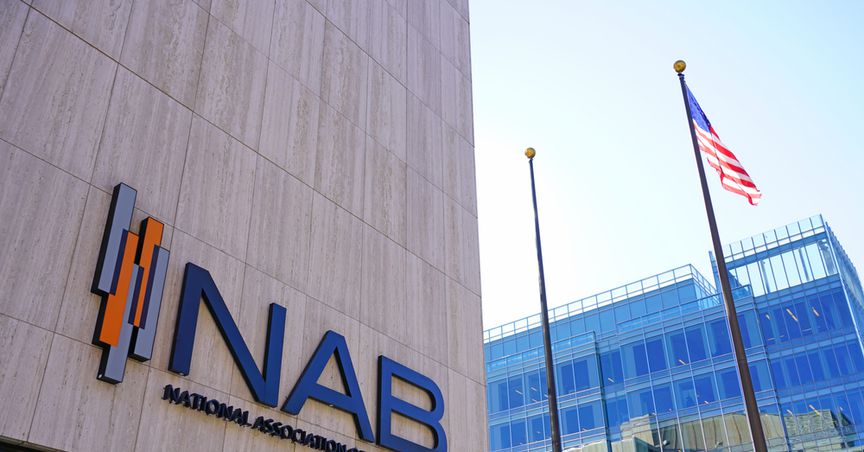Summary
- Recently, NAB issued US$1,500,000,000 subordinated notes due 2030, in accordance with its US$ 100,000,000,000 GMTN Programme (global medium term note programme).
- In the lately released 3Q2020 report ended 30 June, NAB highlighted Group Common Equity Tier 1 ratio (CET1) to be at 11.6%, versus 10.4% in March.
- Amid coronavirus’ challenging time, NAB stated that it has a strategy of focussing on executing fewer projects, highlighting quality over quantity.
National Australia Bank Limited (ASX:NAB) has been slowly boosting attention and traction throughout the market in recent months, as the bank undertakes changes. These would be implemented because of Australia's changing financial landscape both within NAB and due to external forces.
NAB mainly provides personal and business banking services, which has undergone considerable change this year. The bank functions through various divisions such as Business and Private Banking, Consumer Banking and Wealth, Corporate and Institutional Banking, Corporate Functions and Other, and New Zealand Banking.
Issue of US$1,500,000,000 Subordinated Notes
Just this week, on August 21, 2020, NAB issued US$1,500,000,000 subordinated notes due 2030, in accordance with its US$ 100,000,000,000 GMTN Programme (global medium term note programme).
According to NAB, the subordinated notes convert into fully paid ordinary shares to the issuer, where APRA ascertains this to be necessary on the grounds that the issuer would otherwise become non-viable. In some cases, the issuer may also be an approved non-operating holding company.
This update came after the bank issued AU$100,000,000 3.35% subordinated notes on July 24, which are due 24 July 2040.
3Q2020 results ended 30 June
On 14 August, the bank reported cash earnings growth falling by 7% in the third quarter report ended 30 June 2020. This was said to be due to credit impairment charges plunging by 2% to stand at $570 million. The bank also reported a 2% rise in expenses because of higher yearly leave accumulations and compensation.
Home Loan Deferral Check-ins
In the initial part of June, home loan check-ins started with the bank and NAB Assist colleagues getting in touch with its clients. Around 24,000 or 40% of consumers reached by 5 August. On that basis, consumers contacted (till the release of this update on 14 August) around 16% chose to recommence repayments.
NAB’s third quarter results mentioned $1.50 billion in unaudited statutory new profit. The bank also reported $1.55 billion in unaudited cash earnings. However, cash earnings growth was down 7% and Group Common Equity Tier 1 Ratio (CET1) came in at 11.6%, versus 10.4% in March. This covered $4.25 billion of proceeds from institutional placement and SPP (share purchase plan).
NAB’s Dividend/ distribution history
On 27 April, NAB announced AU 30 cents per share dividend, for 6-month period ended 31 March, which was paid on 3 July.
The interim dividend payout was quite low in comparison to the last two payouts. In previous payments from the bank, the price was significantly higher. For both the interim and final payout in 2019, shareholders received 83 cents per share. In 2018 both the interim and final payouts were recorded at 99 cents. Moreover, 99 cents payout had also been the standard for the bank since 2014.
Where to next for NAB share price?
NAB share price has remained relatively steady across the last six months. This is in spite of the current health crisis gripping the globe. February 26, 2020 saw NAB share price closing at AU$26.24.
As of August 27, NAB share price sits at AU$17.8, decreasing by 1.111% from its last close. While there has been AU$8.44 drop between the two dates (February to August), the impacts of COVID-19 must be considered, resulting in the shake-up of the economy. At its lowest, the bank's share price had hit $AU13.88 on March 23. This is in line with many other, if not all businesses, firms, and corporations’ condition at that particular point of time.
Since then the NAB share price has hit many peaks and troughs in the following months, however, seems to be slowly steading with a small increase daily.
From its lowest point in the last six months across the pandemic, NAB has managed to reclaim some of its original share price. May 28, 2020 saw a leap in share price for NAB, closing at AU$18.79 and despite a small dip in the following few days the price bounced higher again to AU$20.47 on June 9.
The new high was soon met with small dips over the last few months however it appears to now sit steady at AU$17.8, as on 27 August.
Comparatively, NAB’s share price the same time the year before, 26 August 2019, saw it close at AU$27.06. Considering the share price was listed as AU$27.41 on February 21, 2020, just before the news of novel coronavirus hit across the world. This would imply that NAB was averaging fairly well during the months in between before the pandemic impacted the market.
Across the full year, 26 August 2019 to the same time in 2020, the NAB share price has just fallen short of reaching a full AU$30, closing at AU$27.06. The closest NAB share price reached to AU$30 was on 25 September AU$29.92.
Given the prices known since then, it would seem that without coronavirus, NAB share price would have remained steady or at least had the potential to hit AU$30.
Outlook
On the outlook front, NAB stated that there is still too much uncertainty in the market currently to make any definitive statements. In the bank's 2020 third quarter trading update, NAB stated that it will be focussing on executing fewer projects, highlighting quality over quantity.
Author’s Bio:
Kate is an experienced Journalist with a demonstrated history of working in the financial services industry. She also has a strong media and communication skills with a bachelor's degree in Journalism from The University of Queensland.




